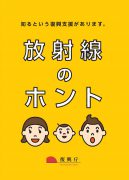Wild boars (Sus scrofa) loaded with dangerous quantities of cesium 137 have been turning up in tests conducted in central Sweden. Some specimens have been found carrying levels as high as 16,000 becquerels of radioactivity per kilogram of meat — an amount ten times higher than the set safety threshold in that country.
[…]
Boar meat is very popular throughout Europe and is used in many goulashes and stews. Boar is even considered a delicacy in multiple locations.
“Hunters won’t shoot the animals,” explained Calluna consultant Ulf Frykman, to Fox News. “When you see 16,000 [Bq/kg], people get worried.”
Wild pigs are about as far apart in their feeding behaviors from a koala bear as you can get. While a koala lives almost exclusively on a diet of eucalyptus leaves taken high in the trees, wild boars and feral pigs will eat just about anything — most of which is foraged from the ground where isotopes can remain in heavy concentrations. Additionally, wild boars like to feast on truffles, false truffles and other mushrooms known to readily absorb radiation.
“The cesium stays in the ground,” Frykman told Fox News. “It’s not a problem for moose and deer anymore who eat higher up, from bushes.”
[…]
Nuclear Hogs: A Problem Throughout Europe
It’s not only Sweden that is experiencing problems with nuclear hogs. Last winter in the Sumava mountain region, an area shared by Germany, the Czech Republic and Austria, a spike in radioactive boars was observed after an unusually cold and snowy winter forced the animals there to resort to a diet of false truffles — bio-concentrating radioactivity upward into the wild swine.
Germany has been hampered by radioactive boar problems for years. In many regions, all boar meat must be tested for radioactivity with the government being forced by regulations to buy all contaminated meat from the hunters who harvest it. There are also widespread reports in Germany of these contaminated animals attacking people.
Radioactive Wild Boars Running Amok Around Fukushima Too
Earlier this year, Fukushima Prefecture in Japan underwent a radioactive wild boar crisis after hundreds of specimens moved down from the mountains into contaminated and largely deserted areas around the crippled Fukushima Daiichi power plant. Reports from the ground described aggressive behavior where boars would “stalk” and even attack people.
[…]
Read more.









